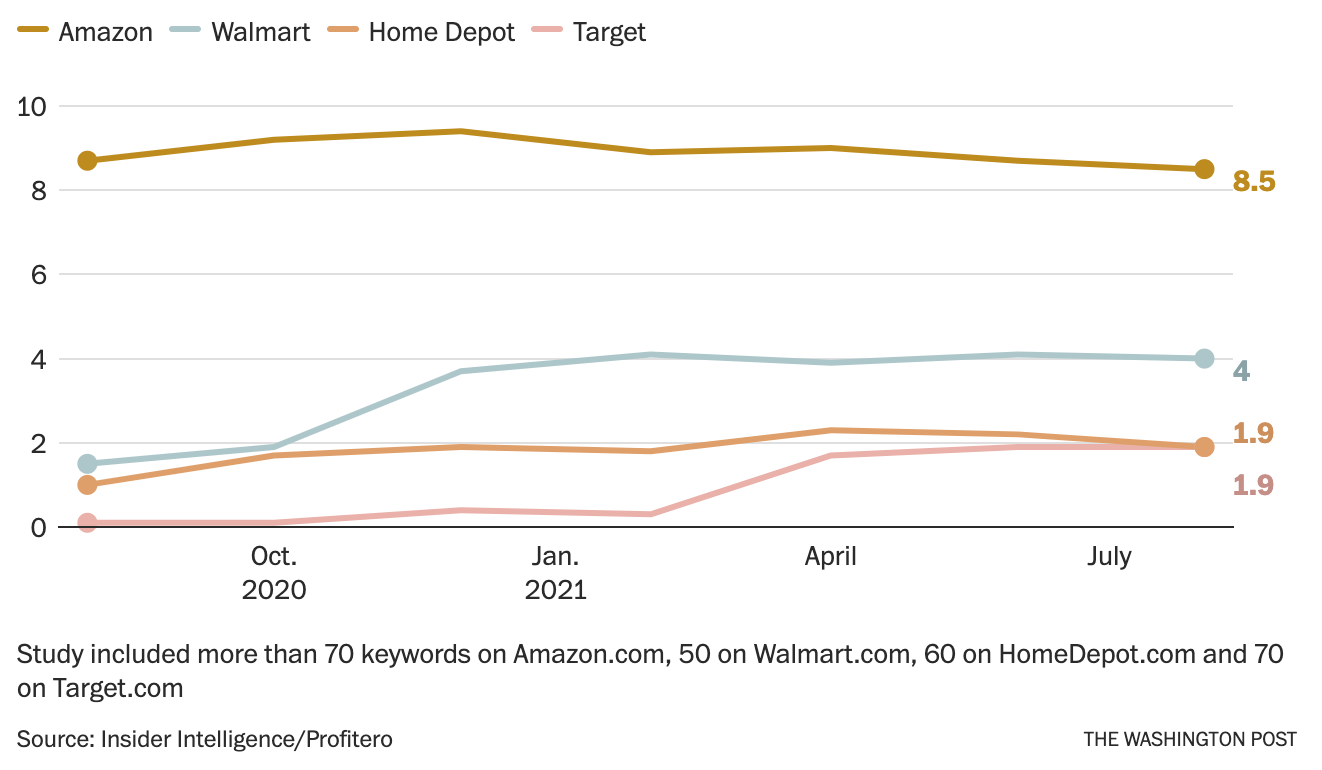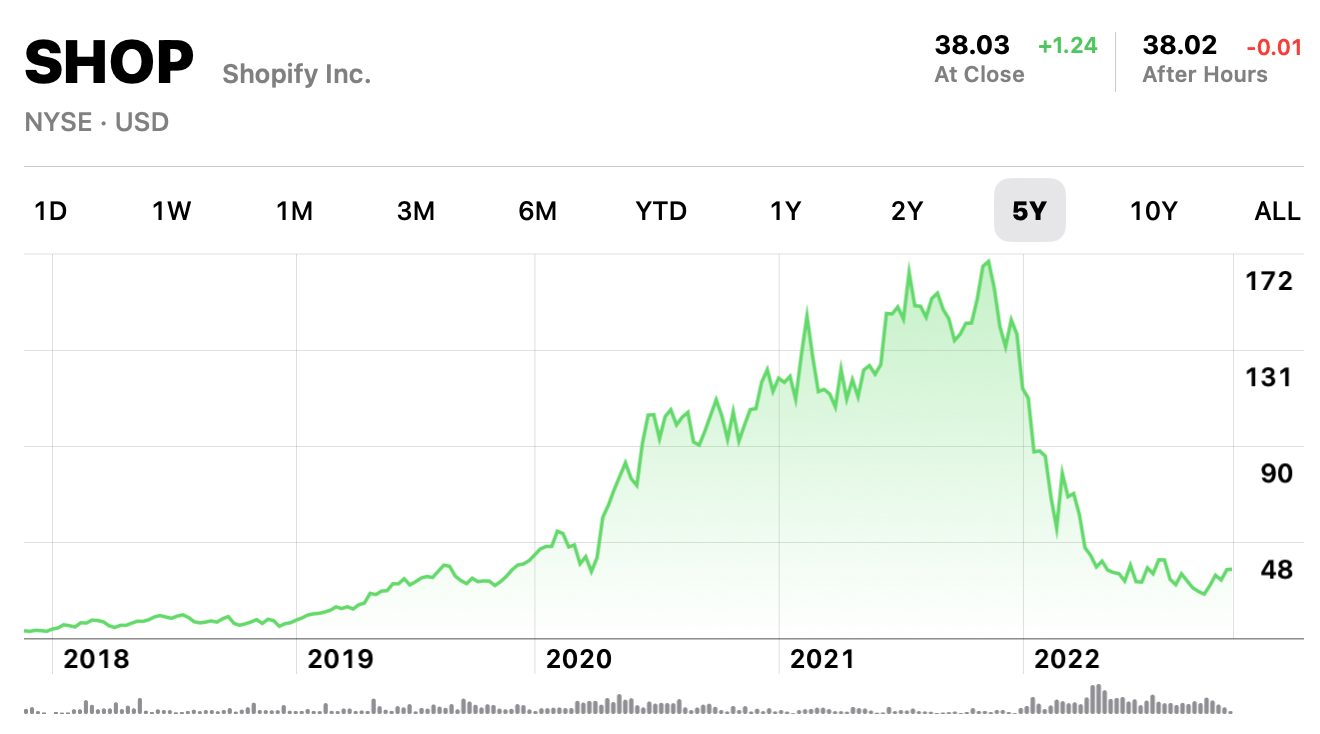The Future of E-commerce
Nov. 29, 2022Consumers spent $1 of every $5 online in Retail in 2021, with 14% growth year-over-year. Even with things returning to “normal” post-pandemic, shopping habits are unlikely to change back to the pre-pandemic: Cyber Monday online retail sales recently set a new record of $11bn in sales in 2022.
Online shopping is proliferating, but shopping experiences were built in the 90s to optimize revenue for merchants. And there is a giant Trojan horse in the consumer kingdom - advertising. Big search companies like Google, Amazon, and Meta exercise their power in merchant-centralized experiences and exploit consumers’ inertia and loyalty to their benefits, sacrificing customer experience.
There is a need to level the playing field with a more distributed power dynamic where consumers have more seamless, personalized experiences and complete control of their privacy. That shift, if (when) it happens, will result in more benefits for merchants with less PII to handle and the ability to create highly personalized and high-converting experiences for loyal audiences.
Big commerce
When thinking about big e-commerce, Amazon always comes first to mind. With customer obsession at their core, they have grown their retail business to an astonishing $260B in annual revenue. Fast shipping, a broad selection of products, and relatively low pricing have driven loyalty and revenue growth for the last 27 years of the company’s existence:
It’s impossible to imagine a future ten years from now where a customer comes up and says, ‘Jeff I love Amazon; I just wish the prices were a little higher,’ [or] ‘I love Amazon; I just wish you’d deliver a little more slowly.’ Impossible. […] When you have something you know is true, even over the long term, you can afford to put a lot of energy into it.” by Jeff Bezos
But is Amazon providing the best customer experiences they can? Let’s look at Amazon’s dark side - the ad business.
Amazon made $31bn in ad-revenue sales in 2021, becoming the third-largest ad company in the United States.
According to the analysis by Wall Street Journal :
The first page of Amazon results includes an average of about nine sponsored listings
This is very high compared to other big there (Walmart, HomeDepot, and Target):

Despite that, Amazon claims to be very focused on customers when showing ads:
“We are dedicated to providing customers with a world-class shopping experience, including working hard every day to ensure the ads they see are useful, informative, and help make shopping a little bit easier,” said spokesman Patrick Graham.
Buy many will disagree. Ads are distracting and can be misleading.
But it is gradually turning their search results page into the next big thing. It is supposed to be a place to find products, it’s becoming a tacky strip mall filled with neon signs pointing you in all the wrong directions.
But what about the premise of the Internet: providing more information and making better choices?
Ads are a fantastic revenue stream for Amazon: it’s the third biggest advertiser in the US after Meta and Alphabet. However, it passes an ad-revenue tax on customers by providing misleading and suboptimal product results for search queries.
Google has been famously continuously sacrificing user experience in favor of ad business growth. It all comes down to growth, unfortunately. That tendency produced several rivals: DuckDuckGo and most recently Neeva, Kagi and others, but Google is still the dominant player.
Ads are a fundamental fallacy (or business model if you like) for most of the influential tech monopolies: Meta, Google, and ByteDance, mostly leading to a degraded user experience. Even some of the most ad-resistant businesses like Apple can’t sustain the pressure for revenue growth
Isn’t Amazon becoming Google Search with the same problem of low-quality search results: one, two, three, four? Who are the Neeva-s and DuckDuckGo-s for Amazon?
Decentralization
How do we protect customers from aggressive advertisements on Amazon? We shop with smaller brands, essentially moving towards decentralization. Instead of throwing ads at users through aggregators, brands want to build a closer relationship with customers :
- 72% of people say they are more likely to purchase from a brand if it consistently provides them with a more personalized experience.
- 61% of consumers would be more loyal and more likely to buy from a brand if they were invited to be part of a customer advocate community
Shopify is the most prominent answer to that model. Its stock during the pandemic has been a reflection of the future of shopping:

As Shopify brands don’t have an effective aggregator distribution like Amazon, they must rely on traditional performance marketing: Google, Instagram, TikTok, and email marketing channels. As a result, the ads are still there, but it’s no longer Amazon in control. But there is no drastic difference. Ad dollars has just moving to other tech-giant’s pockets.
Another model is social commerce, which got a lot of traction recently with the launch of Instagram shopping and TikTok Business. This works by aggregating tons of user data to provide relevant ads, which will eventually fall into the same ad-driven revenue growth trajectory and with degrading customer experience trap as Amazon.
The alternative
You would agree that personalized experiences are great, even in ads. Still, ad businesses will inevitably produce more and more noise over time, making this model unsustainable.
What happens with any freemium SaaS? Tons of value with a free account in the beginning, but less and less value (or no value) for free, while the company is trying to squeeze profits with high pressure from venture capitalists.
The answer might be how power is initially distributed in this equation between customers and merchants: merchants have a lot of control over the shopping experience nowadays. What if we flip that and empower consumers by letting them:
- own their identity they share with merchants: emails, payment data, addresses, etc., to enable a borderless shopping experience
- Own and maintain their shopping preferences across merchants and let merchants personalize their customers experience with their permission
How do we ensure that shopping experiences stay high-quality and does not degrade over time? Capitalism has an answer for that: competition. What if dozens or hundreds of applications compete to provide users with the best universal shopping built on the same platform? Customers will consistently be winning in that scenario. The Internet has already proved that a lot of value could be created by having an open protocol and being given away for free.
What if the platform or protocol was free (or open source)? What if it allowed consumers to go from brand to brand and never sign up for an account, never fill out their payment data, never get annoying promotional emails, and only see the items that fit their shopping preferences: sizes, colors, etc.? There will be no retargeting ads because there will be no way to track users. What if merchants could build highly-personalized experiences with more in-depth customer profiles and drive higher conversions? Wouldn’t the world be a better place?
![]()
I know there is a lot that needs to be unpacked, but let’s summarize the benefits for both sides of the market:
For consumers
- No need to sign up or enter any data at the checkout.
- Consumer data is never directly shared with merchants: there is no way for merchants to track users across the web (bye-bye cookies).
- Out-of-the-gate personalized experience browsing the brand if consumers opt-in
- No spam emails, etc.
For merchants
- No need to handle PII: reduced compliance requirements and costs
- More in-depth consumer profiles to build personalized shopping experiences, which will result in higher conversion rates
- Reduced personalization and data processing costs that happens on customers’ devices.
That’s it for now, but I plan to dive into this further and get into more details on what is possible here in the next post. Stay tuned! Meanwhile, follow me on Twitter.